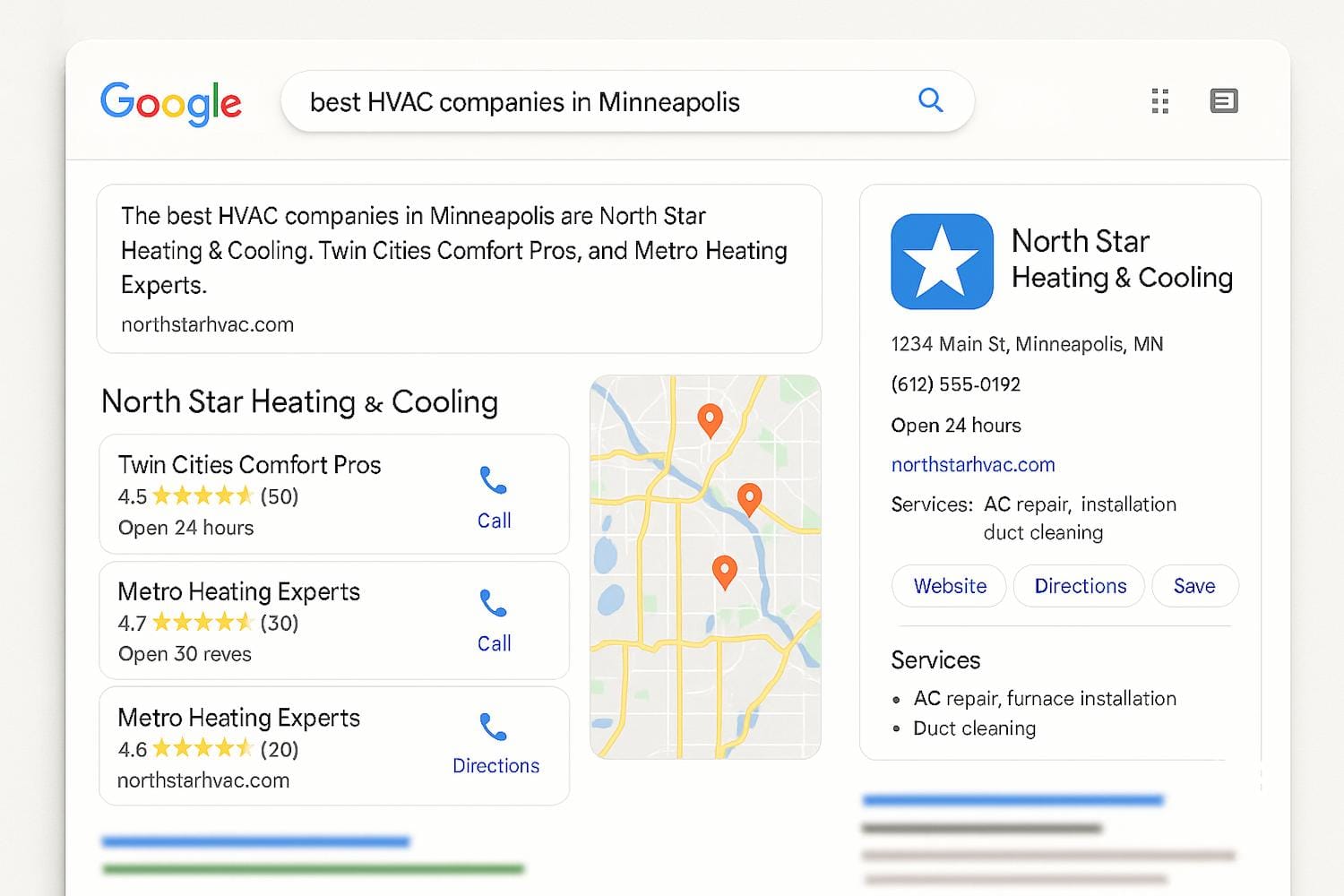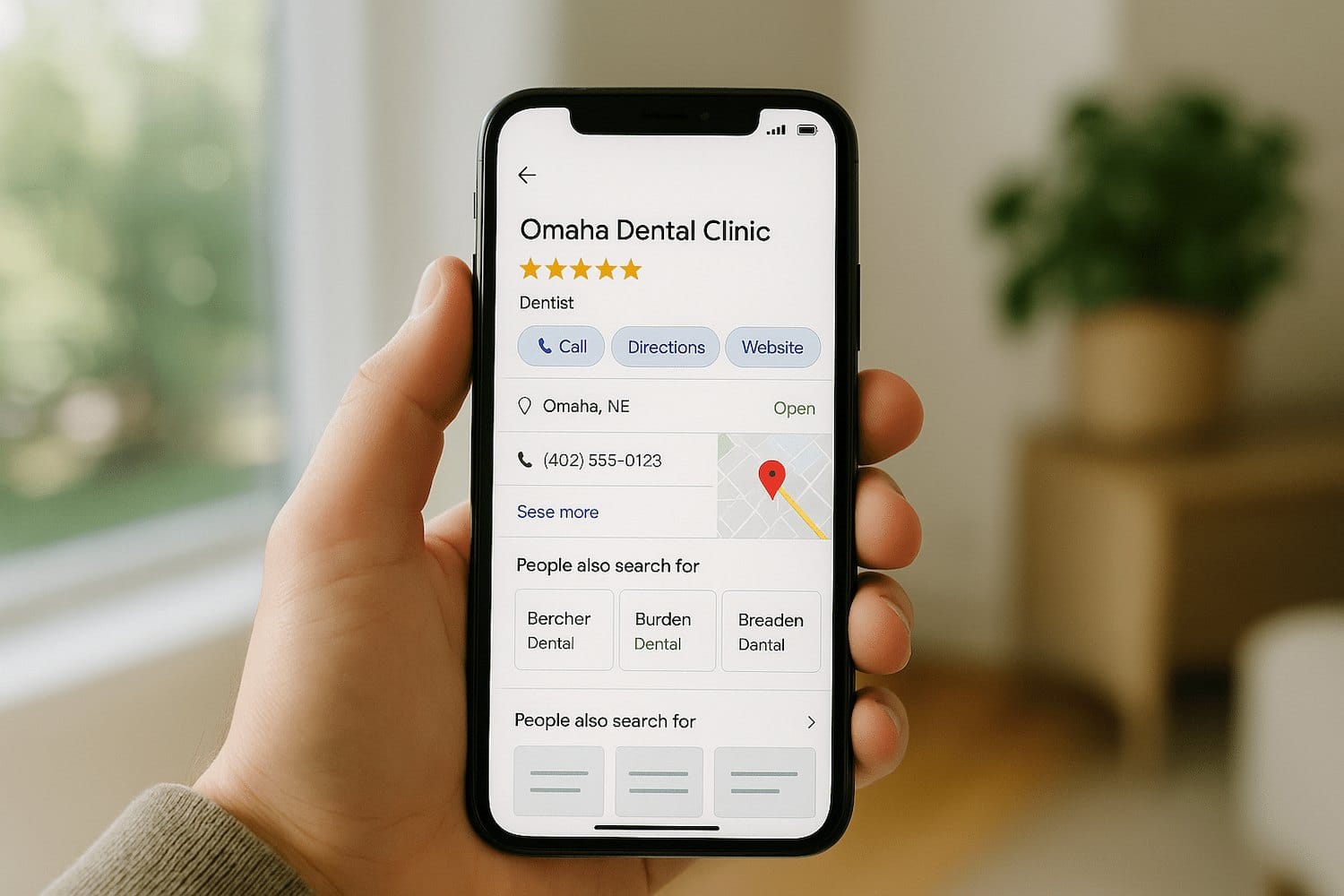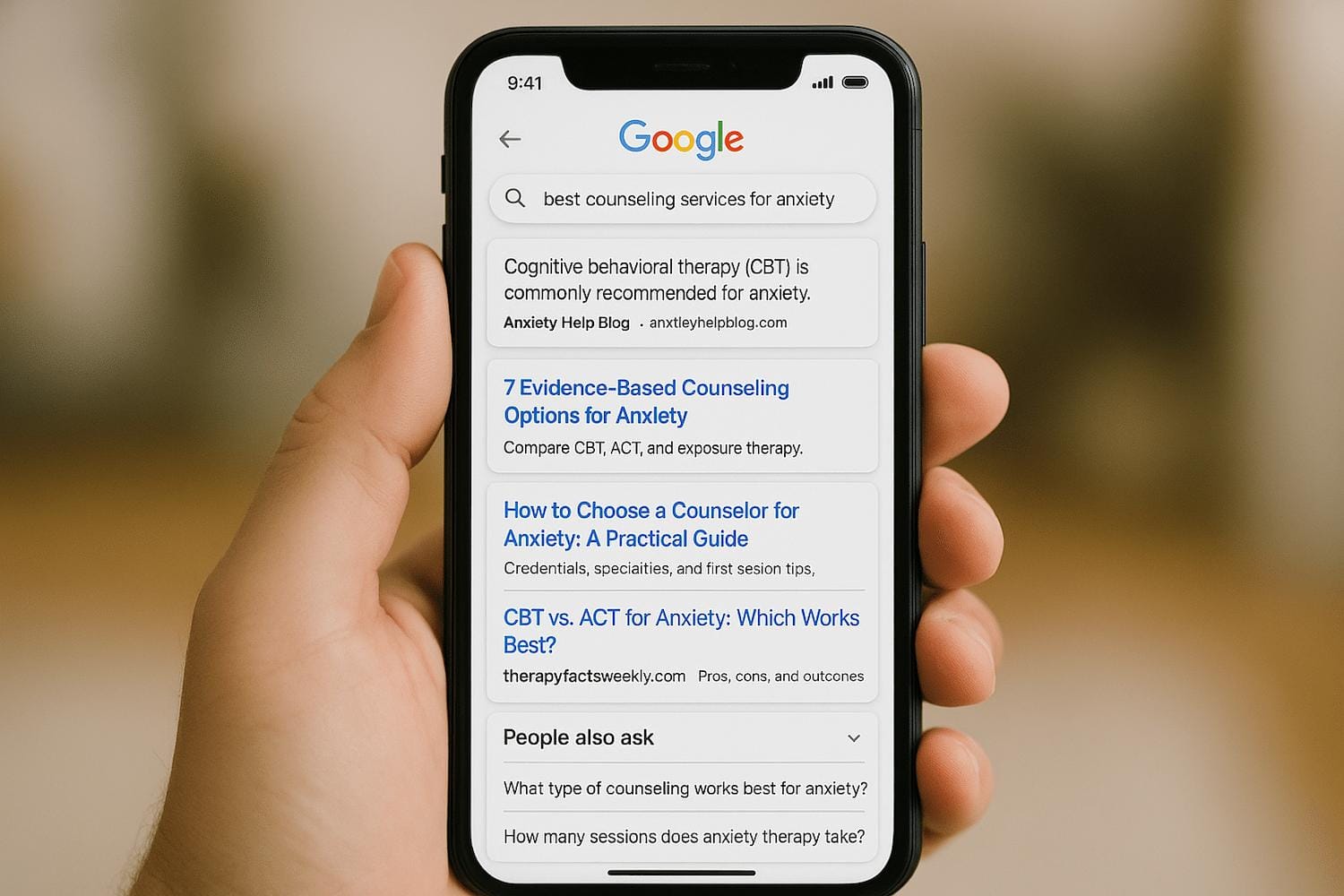How to Optimize for SERP Features: Complete 2025 Guide
Key Takeaways
- SERP features optimization requires structured content, schema markup, and strategic keyword targeting to appear in enhanced search results
- Focus on featured snippets, People Also Ask boxes, and local packs as they generate the highest click-through rates and visibility
- Use tools like SEMrush Position Tracking and Google Search Console to monitor your SERP feature performance and identify optimization opportunities
- Implement proper HTML structure with headings, lists, and tables to increase chances of being selected for various SERP features
- Target long-tail and question-based keywords as they have higher probability of triggering SERP features compared to broad terms
Understanding SERP Features and Their Impact
Gone are the days when search results were simply ten blue links on a page. Today’s Google search results are dominated by enhanced features that fundamentally reshape how users interact with search engines. SERP features are specialized elements within Google’s search engine results pages that go beyond traditional organic results, including featured snippets, knowledge panels, local packs, image carousels, and rich snippets.
The numbers tell a compelling story: 98.47% of search results now include at least one serp feature, making optimization essential for maintaining competitive visibility. This dramatic shift means that traditional organic results occupy significantly less serp real estate than they did just five years ago. When you consider that SERP features can increase organic traffic by 20-30% when properly optimized, the strategic importance becomes crystal clear.
The relationship between SERP features and user intent satisfaction drives Google’s continued expansion of these elements. Search engines prioritize delivering immediate, actionable answers that match what users actually want to find. Whether someone searches for “best Italian restaurants nearby” or “how to change a tire,” Google’s serps now surface the most relevant information format—local pack results for the restaurant query, step-by-step featured snippets for the tire change question.
Understanding this intent-feature relationship forms the foundation of successful optimization. Each search query triggers specific types of serp features based on user behavior patterns, seasonal trends, and the nature of information being sought. Google displays these enhanced results because they dramatically improve user satisfaction and reduce the time between query and answer.


Essential SERP Features to Optimize For
Featured Snippets Optimization
Featured snippets represent the holy grail of search visibility—the coveted “position 0” that appears at the top of Google’s search results. These concise, direct answers to search queries capture significant click-through traffic and establish immediate authority for your content.
To target position 0 effectively, create concise 40-50 word answers that directly address common user questions. Place these answers immediately below H2 or H3 headings that mirror how people actually search. Use an inverted pyramid writing style where the most crucial information appears first, followed by supporting details and context.
Format your content strategically based on query type. Paragraph snippets work best for definitions and explanations, numbered lists excel for step-by-step processes, and tables shine for comparisons and specifications. Include specific statistics, dates, and concrete examples in your answers to increase selection probability.
For example, if you’re targeting “how long does SEO take,” structure your content like this:
How Long Does SEO Take to Show Results?
SEO typically takes 4-6 months to show significant results for new websites, with established sites seeing improvements in 2-3 months. The timeline depends on competition levels, content quality, and technical optimization.
People Also Ask (PAA) Boxes
People Also Ask boxes represent one of the most valuable serp feature opportunities because they provide multiple chances for visibility within a single search result. These expandable accordions contain related questions that Google dynamically generates based on user behavior and search patterns.
Research related questions using tools like AnswerThePublic and AlsoAsked.com to identify the most commonly asked variations of your target keywords. Create comprehensive FAQ sections with questions formatted as H3 headings followed by detailed, helpful answers that provide genuine value to users.
Implement FAQPage schema markup to increase your PAA eligibility. This structured data helps Google understand your content organization and makes it easier for the algorithm to extract relevant Q&A pairs. Target conversational and question-based keywords in your content since these phrases have higher PAA trigger rates.
The key to PAA optimization lies in answering the specific question completely while naturally connecting to related topics that encourage users to explore more of your content. Each answer should be comprehensive enough to satisfy the user’s search intent while enticing them to click through for additional details.
Local Pack and Map Features
Local pack features appear for location-based searches and represent a massive opportunity for brick-and-mortar businesses to capture high-intent traffic. These map-integrated results typically show three local businesses with contact information, reviews, and driving directions.
Optimize your Google Business Profile with complete, accurate information including business hours, photos, services, and regular updates about your business. Consistency across all online directories is crucial—ensure your NAP (Name, Address, Phone) information matches exactly across Yelp, Yellow Pages, and industry-specific directories.
Encourage customer reviews and respond to all feedback professionally and promptly. Review quantity and quality significantly impact local pack rankings, with businesses averaging 4+ stars and 50+ reviews showing the strongest performance. Use location-specific keywords in your title tags and meta descriptions, but avoid keyword stuffing which can trigger penalties.
For service area businesses, create location-specific landing pages that target neighborhoods, cities, or regions where you operate. These pages should include local keywords, neighborhood-specific content, and clear service area definitions that help Google understand your geographic relevance.


Technical Optimization Strategies
Schema Markup Implementation
Schema markup serves as the technical foundation for most serp features, providing search engines with structured data that enhances content understanding and feature eligibility. Without proper schema implementation, your chances of securing rich results drop dramatically.
Use Organization schema for company information and knowledge panel eligibility. This markup helps Google understand your business structure, contact details, and relationship to other entities mentioned on your website. For e-commerce sites, implement Product schema that includes pricing, availability, ratings, and detailed specifications to target shopping results.
Add Review and AggregateRating schema to display star ratings in search results. These visual elements significantly increase click-through rates and help your listings stand out from competitors. Validate all schema using Google’s Rich Results Test and Schema.org validator to ensure proper implementation and avoid penalties for invalid markup.
JSON-LD format is Google’s preferred method for schema implementation. Place this structured data in the section of your pages or immediately after the opening tag. Keep schema markup updated as your content changes—outdated or incorrect structured data can actually harm your serp feature eligibility.
Content Structure and Formatting
HTML structure plays a crucial role in how search engines interpret and extract your content for various serp features. Create a clear heading hierarchy using H1, H2, and H3 tags that mirrors user search intent and question patterns. Your H1 should target your primary keyword, while H2s and H3s should address related questions and subtopics.
Use ordered lists (ol) for step-by-step processes and unordered lists (ul) for features, benefits, or item collections. Google frequently extracts list content for featured snippets, making proper list formatting essential for optimization success. Include HTML tables for comparisons, pricing information, and specifications since table data often appears in featured snippet table format.
Add internal jump links and a table of contents for long-form content. These elements improve user experience while helping Google understand your content organization. Use descriptive anchor text for internal links that includes relevant keywords and clearly describes the linked content’s purpose.
Advanced SERP Features Optimization
Video and Image Features
Video carousels and image packs represent growing opportunities as Google increasingly emphasizes multimedia content in search results. These features typically appear for how-to queries, product research, and visual topics where traditional text answers fall short.
Upload videos to YouTube with optimized titles, descriptions, and timestamps that target your keyword research findings. YouTube’s integration with Google search results means properly optimized videos have excellent chances of appearing in video carousels and earning featured video snippets. Include transcripts and closed captions to improve accessibility and keyword relevance.
Use high-resolution images with descriptive alt text and keyword-rich file names. Instead of “IMG_1234.jpg,” use “chocolate-chip-cookie-recipe-ingredients.jpg” for a baking article. Implement VideoObject and ImageObject schema markup to provide search engines with detailed metadata about your multimedia content.
Create compelling video thumbnails that clearly represent your content topics and encourage clicks. The thumbnail often determines whether users choose your video over competitors in carousel results, making visual appeal crucial for performance.
Knowledge Panels and Entity Optimization
Knowledge panels appear for notable entities including brands, people, places, and organizations. While you can’t directly control knowledge panel creation, you can significantly influence the likelihood of earning this premium serp real estate through strategic entity optimization.
Build entity authority through consistent NAP information across the web. Every mention of your business name, key personnel, or brand should include identical contact details and descriptions. This consistency helps Google’s knowledge graph understand and trust your entity information.
Create a Wikipedia page if your organization or key personnel meet Wikipedia’s notability guidelines. Wikipedia serves as a primary source for knowledge panel information, making it one of the most valuable entity-building activities you can pursue. Secure mentions in authoritative publications and industry websites that reference your expertise and accomplishments.
Use structured data for Person, Organization, or Place entities throughout your website. This markup helps Google understand the relationships between different entities mentioned on your site and can contribute to knowledge panel eligibility.


Keyword Research for SERP Features
Effective serp feature optimization begins with identifying the right keyword opportunities. Traditional keyword research focuses primarily on search volume and competition, but serp feature targeting requires additional analysis of feature presence and triggering patterns.
Use SEMrush’s Keyword Magic Tool to filter keywords by serp features presence. This allows you to identify terms where featured snippets, PAA boxes, or other features currently appear, indicating optimization opportunities. Target keywords where you currently rank in positions 2-10, as these represent your best chances for climbing to featured snippet position.
Focus on long-tail keywords containing four or more words, as these trigger serp features twice as often as short-tail terms. Question-based keywords using “how,” “what,” “why,” “when,” and “where” show particularly high feature trigger rates. Analyze the original search query patterns that lead to your existing organic traffic to identify feature optimization opportunities.
Examine serp feature competition levels using tools like Ahrefs or SEMrush to prioritize low-competition opportunities where your content has realistic chances of earning enhanced visibility. Track serp features for your target keywords over time to understand seasonal patterns and algorithm updates that affect feature presence.
Create a keyword map that aligns specific terms with appropriate serp feature types. Informational searches typically trigger featured snippets and PAA boxes, while commercial queries often show shopping results and product carousels. Local searches activate local packs and map features, while branded searches generate sitelinks and knowledge panels.
Monitoring and Measuring SERP Feature Performance
Tracking serp features requires specialized tools and metrics beyond traditional ranking monitoring. Set up SEMrush Position Tracking specifically configured to monitor serp feature rankings for your target keywords. This provides visibility into when your content appears in featured snippets, PAA boxes, and other enhanced results.
Use Google Search Console’s Performance report to track impressions and clicks from serp features. The Search Console data shows which queries trigger feature appearances and how those features impact your overall organic traffic. Filter results by search appearance to isolate serp feature performance from traditional organic results.
Monitor competitors’ serp feature presence using comprehensive SEO tools that track feature wins and losses across your keyword portfolio. Understanding when competitors gain or lose featured snippets helps identify content gaps and optimization opportunities for your own strategy.
Track click-through rate improvements after implementing serp feature optimizations. Featured snippets and rich snippets typically increase CTR by 5-15%, while local pack appearances can drive 20-30% higher click-through rates for location-based businesses. Document these improvements to measure ROI and justify continued optimization investment.
Set up automated alerts for lost serp features using tools like SEMrush or Ahrefs. SERP features can be volatile, with Google frequently testing different content sources for enhanced results. Quick response to feature losses helps maintain visibility and competitive advantage.
Common SERP Feature Optimization Mistakes to Avoid
Keyword stuffing in attempts to trigger featured snippets often backfires spectacularly, resulting in algorithm penalties that harm overall search visibility. Google’s natural language processing easily identifies unnatural keyword density and rewards content that reads naturally while addressing user intent comprehensively.
Creating content solely for serp features without considering user value represents a fundamental strategic error. While optimization techniques can improve feature eligibility, the underlying content must provide genuine value that encourages user engagement and satisfaction. Low-quality content rarely maintains serp feature positions long-term.
Ignoring mobile optimization proves particularly costly when 60% of serp feature interactions happen on mobile devices. Featured snippets, local packs, and other features must display properly on smartphones and tablets to maintain performance. Test all optimized content across multiple device types and screen sizes.
Failing to update content regularly often results in losing serp feature positions to competitors who maintain fresher, more accurate information. Google favors current, relevant content for most serp features, particularly in rapidly changing industries. Establish regular content review schedules to maintain feature eligibility.
Neglecting user intent alignment while chasing specific serp features creates content that may achieve enhanced visibility but fails to convert visitors into customers. Every optimization should support both search visibility and business objectives, creating a sustainable competitive advantage.


Future-Proofing Your SERP Feature Strategy
Google’s integration of AI Overviews represents the next evolution in search results, potentially impacting how traditional serp features function. Prepare for this expansion by creating authoritative, well-sourced content that demonstrates clear expertise and includes proper citations from reputable sources.
Voice search optimization becomes increasingly important as smart speakers and mobile voice queries frequently pull answers from serp feature content. Structure your content to answer conversational queries naturally, using the same language patterns people use when speaking rather than typing.
Focus on E-A-T (Expertise, Authoritativeness, Trustworthiness) signals for sustained serp feature presence. Google’s algorithms increasingly prioritize content from recognized experts and authoritative sources, particularly for YMYL (Your Money or Your Life) topics including health, finance, and safety information.
Adapt to Google’s evolving algorithm updates that affect serp feature eligibility criteria. Subscribe to Google’s official communication channels and industry publications to stay informed about changes that might impact your optimization strategies. Test new optimization techniques on less critical pages before implementing site-wide changes.
Diversify your serp feature optimization across multiple feature types to reduce risk from algorithm changes. Don’t rely solely on featured snippets—also optimize for local packs, rich snippets, image results, and other features relevant to your industry and target audience.
Frequently Asked Questions
How long does it take to rank in SERP features after optimization?
SERP feature rankings can appear within 2-4 weeks for well-optimized content on established domains, though competitive keywords may take 2-3 months to see results. The timeline depends on your current rankings, content quality, technical implementation, and keyword competition levels. Pages already ranking in the top 10 organic results have the highest probability of earning featured snippets and other enhanced features.
Can small websites compete with large brands for SERP features?
Yes, serp features often prioritize content quality and relevance over domain authority, giving smaller sites opportunities to outrank larger competitors with better-optimized, more specific content. Google frequently selects featured snippets from smaller websites that provide clearer, more direct answers to user questions than major brands with less focused content.
Do SERP features always increase website traffic?
Not always – features like AI Overviews and some featured snippets can create “zero-click” searches where users get answers without visiting websites, but most serp features increase click-through rates by 5-15%. The key is optimizing for features that encourage additional exploration while providing enough value in the snippet to establish authority and trust.
Which industries benefit most from SERP feature optimization?
Local businesses, e-commerce, healthcare, finance, and education see the highest returns from serp feature optimization due to high search volumes and user intent to find specific information quickly. Service-based businesses particularly benefit from local pack optimization, while informational websites excel with featured snippets and People Also Ask optimization.
How often should I update content to maintain SERP feature rankings?
Update content quarterly for evergreen topics and monthly for rapidly changing industries, ensuring data accuracy, adding new information, and refreshing examples to maintain serp feature eligibility. Monitor your serp feature performance weekly to identify when updates are needed and respond quickly to competitors who might be targeting your featured positions.




